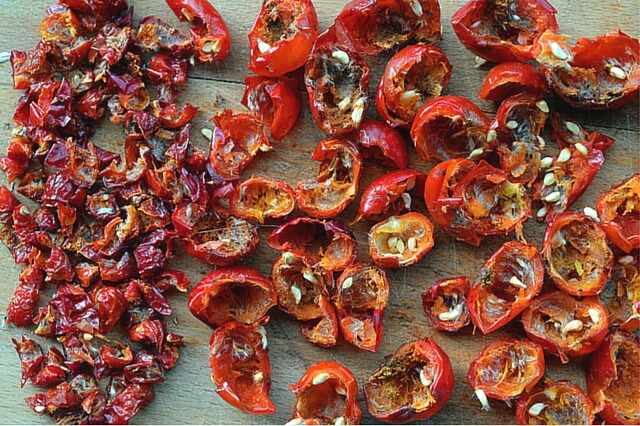Rosehips, also known as rose hips, are the fruit of the rose. They can be found just below the petals on roses and contain the seeds of the rose plant. They are typically red to orange in color but can sometimes be purple or almost black in some species.
These seed holding pods begin to form after successful pollination occurs.The flowers are pollinated in the fall with rosehips beginning to form late summer through autumn.
Each rosehip contains a single seed. They are developed when stem tips swell to enclose the hairy achenes, or small one seeded fruits that do not open to release the seed. The smooth skin of the hip is first green before ripening before turning its final color.
While most roses are grown for the beauty of the flowers themselves, some species of roses are grown for their beautiful rosehips. Rosa moyesii is a species of the rose family Rosaceae that forms prominent red rosehips in the fall after flowering in the summer.

Roses have been a favorite of the garden as bar back as 2,600 BCE. In 600 BCE, Greek poet Sappho named the rose “Queen of Flowers.” In Greece and Rome, garlands of roses were used to decorate statues of gods.
Early Christians considered rosehips to be sacred, and crafted the first rosary beads from rose hips. Catholic rosaries are incorporated into worship ceremonies, giving them religious significance.
Rosehips have a range of uses. In addition to being ornamental, they were originally used most often in medicine. Most herbalists have discontinued use of rosehips or rose petals for therapeutic purposes.
These fruits can be consumed in many ways, the simplest being eaten raw like berries. The fruit does not taste like roses, but tangy, similar to a red zinger tea. They are an excellent source of vitamin C with up to 40% more vitamin C than oranges.

Rosehip tea is refreshing and full of vitamins. Rich in vitamins C, A, and K, they help boost the immune system and can help free radicals. The fruits contain lycopene which is responsible for giving these fruits their red color. This is also what gives tomatoes their red color and healthful properties. These vitamins make rosehip a beneficial ingredient in skincare products too, increasing cell turnover and decreasing dark spots.
Careful preparation is necessary to reduce deterioration of fruit’s vitamins. From drinks like herbal teas and wine to foods including jellys, bread, and rosehip soup, the list of the hip’s edible uses is long.
Rosehips are best harvested right after the first frost and will typically be bright red or orange for most varieties. They are sweeter after the first frost but waiting too long will allow them to get brown spots, similar to the way bananas do.
The fruits are easy to remove from the plant with a gentle twist. It’s typically good to avoid harvesting from plants that have been treated with herbicides or pesticides unless they are organic. Picking them on a dry day will prevent molding.










Leave a comment